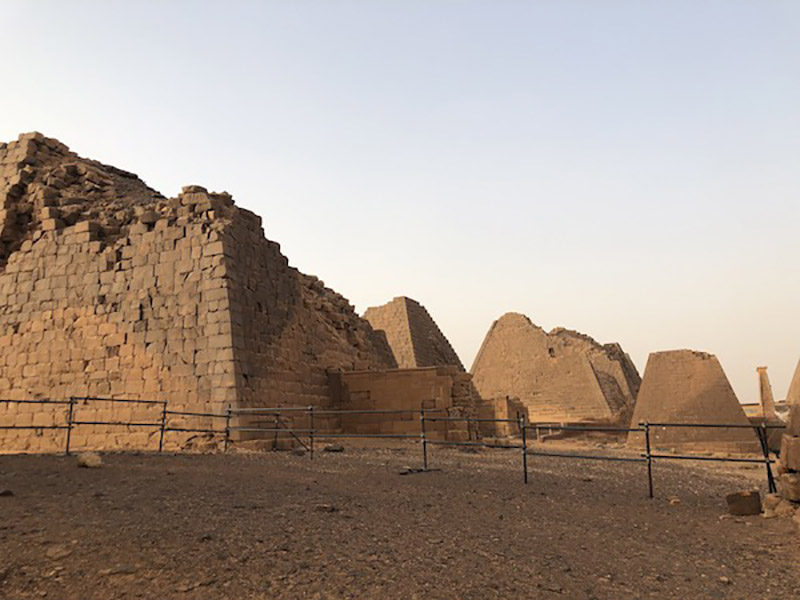
By Sarah Davis
Adventurer and Professional Badass31 May 2019 - 6 Minute Read
Before leaving Uganda, there was one last little drama – and something I had really feared – a parasite burying into my skin.
Jiggers, or Tunga penetrans as they are correctly known, are a sand flea found in sandy terrain and warm, dry climates. The female flea feeds by burrowing into the skin of a host; her abdomen becomes massively enlarged with eggs, which forms a round sac the shape and size of a pea. The idea made me shudder.
I’d started to get a slight burning sensation in one of my toes at night. It was confirmed as being a dreaded jigger, and it had to be removed. If I left it in, there was a risk of severe infection, gangrene, and a limb being lopped off. My friend Peter offered to remove it. I got out a needle, Stanley knife blade, and a cocktail stick. He doused them with a bit of antiseptic and a dose of Aussie “she’ll be right mate,” and set to work.
He delicately dug around, and finally a white, pea-sized thing emerged from my toe. I was simultaneously engrossed and grossed out. The good news is, it healed up brilliantly.

Arriving in Sudan
Minor surgery behind me, it was time to fly to Khartoum, the capital of Sudan. With nearly 50% of the country’s estimated 30 million living here, this large, slightly chaotic city has the Blue Nile on one side and the White Nile on the other.
Over the next week, I spent time with paddlers from Sudan’s Rowing and Canoe Club who helped with the preparations for the next leg of my journey, from Kosti in Sudan’s southern White Nile State, to Khartoum, 200mi (320km) beyond.
Back in a kayak
With a week’s practice and preparation done, we were ready to launch onto the White Nile. It felt so good to be kayaking again.
After a few days, the blisters on my hands were brutal, and by the final and seventh day, my body was really feeling it. But, I got the most amazing lift as we made our final approach back into Khartoum.
The Rowing and Canoe Club had arranged for a welcoming party that included the President of the Olympic Committee for Sudan, the Chief of Water Police for Khartoum, and many others. The President of the Olympic Committee presented us with medals for our effort. I was completely blown away by it all.

This initial section had been the warm-up – now it was time for some rest and to prepare for what was next: around 930mi (1,500km) of paddling up to the border with Egypt.
The long paddle
While I was a bit daunted at the length of this next section, I was excited to see what it would be like to kayak this distance and how I'd handle it.
We gradually built our days into a good routine:
- Get up, pack up camp, make fire, have coffee and bit of food, prep breakfast for later
- Paddle 2.5 to 3 hours
- 30 min break and breakfast
- Paddle 2.5 to 3 hours
- 30 min break and snack
- Paddle 2.5 to 3 hours
- Stop, set up camp, get the fire going, eat, sleep
- Repeat…for 30 days
The river quickly grew remote as we made our way into the desert. There’s plenty to see in the north, and so much ancient history. It's the Nubian region, home to one of Africa’s oldest civilizations, dating back to around 3,000BC.
At Shendi, a group from the Rowing and Canoe Federation met us and took us to the Meroe Pyramids. There are around 350 pyramids in Sudan, built as tombs for the kings, queens, and wealthy citizens, and they’re truly impressive. Rising out of the desert, these structures are slowly being eroded by the wind and sand. They also took a bit of a beating in the 1830s, when Italian Guiseppe Ferline made his way through Sudan, blowing the tops off them in search of reported gold.

Later, at Abri, I was invited to be the first foreign tourist to visit their new heritage museum ahead of its official opening. I felt incredibly honored.
Back on the Nile, we found ourselves well and truly in the desert – there were areas where the sand came all the way to the river, and it looked spectacular. This kind of landscape has always held an appeal and fascination for me. Paddling through the Sahara, the world’s largest hot desert, was somewhat surreal and certainly unforgettable.


We made the most of our resupply points to sample the local food. Meals in Sudan are eaten with your hands. I was getting better at it, but was always being offered a spoon. You’d think after two months in Sudan I’d have nailed it. Apparently not!
The long days on the river were mostly into the wind. While my body got accustomed to the paddling, at times I found it hard, physically and mentally. Someone said to me, when I was struggling, “Enjoy every moment, because when it’s over, you’ll wish you were back here.” That was the nudge I needed to reframe it in my mind and keep smiling.
It was better than I expected – yes, there were some lows, but it was one incredible experience and I loved it. My thanks go to everyone in Sudan who made my time there so brilliant and such a success.
Next up – the home stretch through Egypt.
Read the first three installments of this series here:
Prologue: Where is the Wiki?! Preparing for a first-of-its-kind endeavor
Discover similar stories in
discovery
Adventurer and Professional Badass
Sarah is a British-born Australian with a love of sport and a passion for travel and adventure.




No Comments